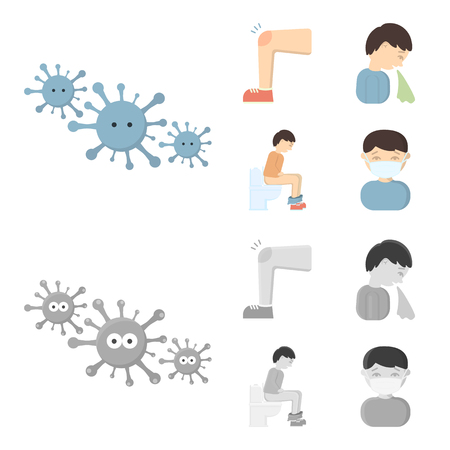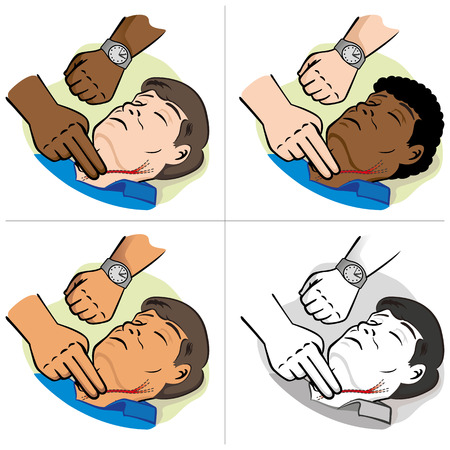1. Understanding Cultural Diversity in the US Healthcare Landscape
Overview of Cultural Backgrounds and Their Impact on Healthcare
The United States is home to a rich blend of cultures, each with unique beliefs, traditions, and values that shape how people view healthcare. When promoting therapies like electrical stimulation, it’s important to recognize how these cultural differences can influence both perceptions and access to care. Some communities might be very open to new medical technologies, while others may be more hesitant due to historical distrust or differing health practices.
Common Cultural Influences in US Communities
| Community | Typical Health Beliefs | Potential Barriers to Care |
|---|---|---|
| Hispanic/Latino | Family-centered decision making, use of traditional remedies | Language barriers, limited insurance coverage, preference for familiar treatments |
| African American | Emphasis on community support, spiritual beliefs in healing | Mistrust from past discrimination, underrepresentation in clinical research |
| Asian American | Incorporation of Eastern medicine, value on harmony and balance | Stigma about certain conditions, language barriers, preference for holistic approaches |
| Native American | Holistic view of health, strong tradition of healing rituals | Lack of culturally sensitive providers, remote location challenges |
| White (Non-Hispanic) | Diverse; often trust in conventional medicine and technology | Varies by region and socioeconomic status; may face cost-related barriers |
The Role of Cultural Sensitivity in Healthcare Communication
Cultural sensitivity means understanding and respecting the diverse backgrounds of patients. For example, some individuals may want to involve their family members in treatment decisions or might have concerns based on religious beliefs. Others may require information in their preferred language or need reassurance that a therapy like electrical stimulation aligns with their values. Recognizing these differences helps build trust and improves outcomes for everyone.
2. Barriers to Acceptance of Electrical Stimulation Therapy
Understanding Cultural Concerns and Misconceptions
Electrical stimulation therapy is a valuable tool in physical rehabilitation, but not all communities in the United States readily accept this technology. Cultural beliefs, past experiences with healthcare systems, and misinformation can create barriers. By understanding these concerns, we can help more people feel comfortable with electrical stimulation therapy.
Common Barriers Across Diverse Communities
| Cultural Group | Common Misconceptions or Fears | Historical or Social Context |
|---|---|---|
| African American | Distrust of new medical technologies; fear of being used for experimentation | Tuskegee Syphilis Study and other unethical practices have led to lasting mistrust in the medical system |
| Latino/Hispanic | Belief that electrical therapies may be harmful or unnatural; preference for traditional remedies | Cultural reliance on home remedies and family advice; language barriers with healthcare providers |
| Asian American | Skepticism about Western medical devices; concern about side effects disrupting energy balance (Qi) | Strong tradition of Eastern medicine; generational differences in acceptance of modern treatments |
| Native American | Mistrust towards outside interventions; fear that technology will override traditional healing practices | Historical trauma from forced assimilation and disrespect for indigenous healing knowledge |
| Elderly Populations (across all groups) | Anxiety about pain, discomfort, or potential dangers of electrical currents; lack of exposure to new tech | Limited digital literacy; memories of older, less safe devices; preference for hands-on therapies |
The Role of Historical Mistrust in Healthcare Decisions
Mistrust does not develop overnight. Many communities have experienced discrimination or neglect within the healthcare system, leading them to question new treatments. For example, African American patients may recall stories of unethical experiments, while Native Americans may remember instances where their traditions were ignored or suppressed.
Examples of Common Concerns About Electrical Stimulation Therapy:
- “Will this device hurt me?”
- “Is it safe to use electricity on my body?”
- “Does this treatment go against my cultural beliefs or family traditions?”
- “Is the provider truly looking out for my best interest?”
- “Can I trust the information if its not explained in my own language?”
Addressing Myths and Building Trust Through Communication
Healthcare professionals should listen carefully to patients’ concerns and explain how electrical stimulation works using simple terms. Culturally sensitive communication—such as using interpreters, providing patient education materials in multiple languages, and involving trusted community leaders—can help break down these barriers.

3. Effective Communication Strategies for Diverse Populations
Understanding the Importance of Cultural Sensitivity
When introducing electrical stimulation therapy in different US communities, its essential to recognize and respect cultural differences. Patients may have unique beliefs about health, healing, and technology. Healthcare providers should listen carefully to patients’ concerns and use language that is respectful and easy to understand.
Using Culturally Appropriate Language
Words matter. Using culturally appropriate language helps build trust and comfort. Avoid medical jargon or complicated terms when talking about electrical stimulation therapy. Instead, use simple explanations and check in often to make sure your patient understands. If English is not a patient’s first language, offer interpretation services or translated materials whenever possible.
| Scenario | Culturally Sensitive Approach | Less Effective Approach |
|---|---|---|
| Explaining therapy to a Spanish-speaking patient | Use certified interpreter or provide Spanish-language materials | Speak only in English, hoping they understand |
| Discussing religious beliefs about treatment | Acknowledge and respect beliefs, offer information within their context | Dismiss concerns as irrelevant to care |
| Describing benefits and risks of therapy | Use plain language, visuals, and analogies familiar to the community | Rely on complex charts or technical terms only |
Health Literacy Tools That Make a Difference
Many people may not be familiar with medical concepts like electrical stimulation therapy. Use health literacy tools such as:
- Pictograms: Simple images showing how the therapy works or what to expect.
- Teach-back method: Ask patients to repeat information in their own words to confirm understanding.
- Bilingual handouts: Written instructions in multiple languages commonly spoken in your community.
- Videos: Short educational clips featuring real people from the community explaining the therapy.
Sample Health Literacy Tool Table
| Tool Type | Description | Best Used With |
|---|---|---|
| Pictograms | Visual aids for steps in therapy process | Younger patients, low literacy groups |
| Bilingual Handouts | Information sheets in English/Spanish/other languages | Diverse linguistic backgrounds |
| Teach-Back Method | Confirming patient understanding by asking them to explain back the information | All patients, especially those new to therapy concepts |
| Community Videos | Culturally relevant stories or demonstrations about electrical stimulation therapy | Elderly patients, visual learners, non-English speakers |
The Power of Community Engagement
Building partnerships with local community leaders, faith groups, and organizations can help make electrical stimulation therapy more accepted and understood. Hosting informational sessions at community centers or churches allows patients and families to ask questions in a comfortable setting. Engaging trusted local figures as ambassadors can encourage more people to consider this therapy option.
Ways to Engage Communities Effectively:
- Collaborate with local leaders for outreach events
- Create culturally tailored presentations
- Offer Q&A sessions with bilingual staff
- Sponsor wellness fairs focused on rehabilitation options
This approach ensures that all members of diverse US communities feel seen, heard, and respected when learning about electrical stimulation therapy.
4. Partnering with Community Leaders and Organizations
Why Community Partnerships Matter
When introducing electrical stimulation therapy to diverse communities across the United States, it is important to recognize that trust is often built through local relationships. Community leaders, faith-based groups, and cultural organizations play a key role in shaping opinions and guiding health decisions. By working together with these trusted figures, healthcare providers can share accurate information and ensure that messages about electrical stimulation therapy are culturally sensitive and well received.
Approaches to Building Trust
Collaborating with Local Influencers
Local influencers—such as neighborhood advocates, teachers, or small business owners—often have strong connections within their communities. By engaging these individuals, providers can better understand community concerns, answer questions in familiar language, and address potential misconceptions about electrical stimulation therapy.
Partnering with Faith-Based Groups
Faith-based organizations often serve as gathering places for many Americans. Working alongside church leaders, pastors, or mosque imams allows healthcare teams to host informational sessions in a comfortable and trusted environment. These partnerships can help bridge gaps in communication by respecting religious values and traditions while sharing the benefits of therapy.
Working with Cultural Organizations
Cultural centers and advocacy groups support specific ethnic or cultural communities by organizing events and providing resources. Collaborating with these organizations helps tailor educational materials to reflect the community’s language preferences, health beliefs, and values. This approach increases the likelihood that information about electrical stimulation therapy will resonate with the intended audience.
Examples of Effective Partnerships
| Community Partner | Role in Education | Potential Benefits |
|---|---|---|
| Local Influencers | Share personal experiences; answer questions; dispel myths | Builds grassroots trust; fosters open dialogue |
| Faith-Based Groups | Host workshops; provide meeting spaces; integrate health topics into gatherings | Makes information accessible; respects spiritual values |
| Cultural Organizations | Translate materials; adapt messaging; organize culturally relevant events | Ensures cultural relevance; increases participation |
Tips for Successful Collaboration
- Listen first: Take time to understand community perspectives before introducing new therapies.
- Be transparent: Clearly explain what electrical stimulation therapy is, how it works, and its safety profile.
- Create feedback loops: Encourage ongoing conversations so concerns can be addressed as they arise.
- Acknowledge cultural differences: Respect beliefs around health and healing when communicating treatment options.
- Celebrate shared successes: Highlight stories of positive outcomes within the community to inspire others.
By partnering with respected community leaders and organizations, healthcare providers can foster trust and encourage broader acceptance of electrical stimulation therapy across America’s richly diverse neighborhoods.
5. Tailoring Educational Materials and Outreach Efforts
Understanding the Importance of Culturally Sensitive Communication
When promoting electrical stimulation therapy in diverse US communities, it is important to recognize that people come from different backgrounds and may have unique beliefs, languages, and preferences. Creating educational materials and outreach efforts that respect these differences can improve understanding and trust.
Adapting Pamphlets and Printed Materials
Pamphlets are often the first way people learn about a therapy or service. To make them more effective for multicultural audiences:
- Translate Content: Offer pamphlets in the main languages spoken in your community, such as Spanish, Chinese, or Vietnamese.
- Use Simple Language: Avoid medical jargon. Explain terms like “electrical stimulation” with simple words and pictures.
- Include Relevant Images: Use photos or illustrations of people from various backgrounds to help readers relate to the material.
- Cultural Relevance: Share stories or testimonials from community members who have benefited from therapy.
Pamphlet Adaptation Example
| Aspect | Standard Pamphlet | Culturally Adapted Pamphlet |
|---|---|---|
| Language | English only | English, Spanish, Chinese |
| Images | Generic stock photos | Diverse individuals representing local community |
| Tone | Formal medical terms | Simple explanations with relatable examples |
| Testimonials | No patient stories | Personal stories from local patients in multiple languages |
Designing Digital Content for Multilingual Audiences
Many people turn to websites or social media for health information. Here’s how to make digital content more inclusive:
- Add Language Options: Provide buttons to switch between languages on your website.
- Create Video Content: Short videos in different languages can explain how electrical stimulation therapy works.
- Accessible Layouts: Use large fonts, clear headings, and audio versions for those with low literacy or visual impairments.
- Cultural Holidays & Themes: Acknowledge cultural holidays in your posts and tailor messages accordingly.
Digital Content Checklist
| Feature | Description |
|---|---|
| Multi-language Support | Selectable language options (Spanish, English, etc.) |
| User-Friendly Design | Easy navigation with icons and clear buttons |
| Diverse Representation | Pics/videos featuring different cultures and age groups |
| Cultural Awareness Posts | Acknowledgement of cultural events relevant to audience |
Hosting Inclusive Information Sessions
The way you organize information sessions can make a big difference in reaching multicultural communities:
- Bilingual Presenters: Have presenters who speak the main languages used locally.
- Culturally Appropriate Venues: Choose community centers, churches, or schools familiar to your audience.
- Cultural Liaisons: Invite respected community leaders to co-host or introduce the session.
- Culturally Sensitive Q&A: Allow time for questions and encourage participation in a respectful environment.
Checklist for Planning Inclusive Sessions
| Step | Description/Tip |
|---|---|
| Bilingual Staff/Volunteers | Select presenters fluent in needed languages (e.g., English & Spanish) |
| Diverse Locations | Select venues trusted by different cultural groups (churches, community halls) |
| Cultural Leaders’ Involvement | Involve local leaders to build trust and increase attendance |
| Culturally Appropriate Materials | Hand out translated pamphlets and show videos in multiple languages |
| Sensitivity Training for Staff | Prepare staff to answer questions respectfully and be aware of cultural norms |
The Value of Personalization and Respect in Outreach Efforts
Culturally sensitive communication is about more than just translation—it’s about showing respect for the values, traditions, and needs of each group. By tailoring educational materials and outreach strategies, providers can ensure all Americans have equal access to electrical stimulation therapy information and care.


